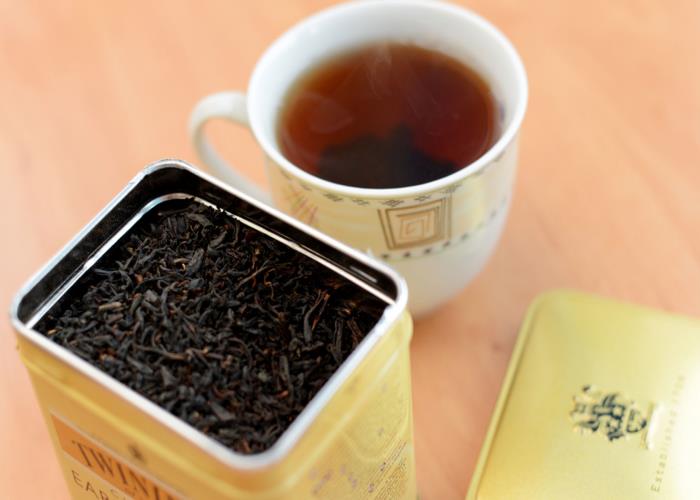The disgusting taste in your next cup of tea

Twinings recently changed the ingredients of Earl Grey tea. Are they insane? Is nothing sacred?
If you were fortunate enough to be away over the summer, you may well have missed out on the countrywide storm that manifested itself inside a teacup.
Believe it or not, the addition of lemon and a tiny bit of bergamot caused the much-loved hot and soothing tipple of smoky black Earl Grey tea to be the subject of a nationwide cat-fight.
The change
It all arose, of course, because tea-makers Twinings took the odd decision of altering the recipe that makes up one of their bestselling and timeless teas – Earl Grey.
In went more lemon and bergamot (the distinctively-flavoured citrus fruit from Southeast Asia, though now grown for commercial reasons in Italy). The result? The cuppa tasted noticeably more ‘Citrus Earl Grey’ than ‘normal Earl Grey’.
Predictably, the ingredient-tweak did not go down well. Before long, furious customers were suggesting that the new version blend was akin to ‘lemon cleaning products’. In fact, one even came back to suggest (and unfortunately for Twinings, this has stuck) it was like ‘dishwater’.
Oh dear.
Complaints
Having complained it was ‘an affront to tea’, some particularly peeved customers – with the backing of the Daily Mail - went on to flood Twinings with letters full of ire, while also launching their very own ‘Bring back the original Earl Grey’ campaign on Facebook. After all, where else does one go these days to make a point?
Once the Facebook campaign was established, it attracted a plethora of people wanting explanations from the 300 year-old company.
Leave things alone
Personally, I was disappointed to hear of the recipe alteration, because it happens to be just about the only tea I drink if I am offered some. Naturally, I sat up and listened.
Of course, I wasn’t much preoccupied with the idea of Earl Grey being no more on supermarket shelves (I’m mainly a coffee drinker so, at the snail’s pace I get through a packet of 20 tea bags, my kitchen’s stash will see me to Christmas ’12), but because the episode represents unnecessary foolery. Or at best, it demonstrates the unhappy obsession large, long-established companies like Twinings seem to have with modernisation.
We’ve seen this happen recently, with HP sauce (the condiment former PM Harold Wilson favoured above all others). It was ‘ruined’ when manufacturers halved its salt content without prior warning.
Why, oh why do these rejuvenations take place? If a company want to perform culinary plastic surgery on a product and release an update, why take away the original?
Strangest of all, these ‘changes’ (which also include re-branding glass jars to squeezy bottles and logo ‘re-jigs’) usually take place when the product is enjoying sky-high popularity. Moves to draw in new clientele (and boost sales), in this case resulted in the company losing customers, rather than gaining them. Worth it? I don’t think so.
Reputation
There’s little wonder such backlash fell into Twinings’ lap.
It hasn’t been a great set of years for the company, especially since it was announced a handful of months ago, that they were to cut a near-300 jobs and take a taxpayer-funded grant of £10 million and move their factories abroad. This initiative was set up to cost-cut, but all it really did was build resentment.
(And if the outgoing, loyal staff from North Tyneside weren’t disappointed and dismayed enough, they were further humiliated when allegedly ordered to train the Polish counterparts who were to continue with their jobs).
Politics aside, Earl Grey is also a tea that has been lining mugs for over 150 years, and it’s often considered a ‘British staple’.
It is named after the former British Prime Minister, the 2nd Earl Grey - the author of the Reform Bill of 1832. Legend goes that he once received a special sort of tea which came flavoured with the oil of bergamot, but it developed into a gift that simply kept on giving.
It made such an impression, he decided to keep drinking it for the rest of his life. There are, of course, numerous stories that exist of this tea’s birth, but their abundance only really represents the blend’s evidently deep history.
A victory
On the surface, Twinings seem to have learnt their lesson. Embarrassed over the outcry that followed the release of their new version of Earl Grey in April, they’ve been forced to backtrack.
But while they’ve brought back the original tea by renaming it as ‘Earl Grey The Classic Edition’, it is currently only available online from Twinings. And they are wholeheartedly sticking by their new product and retaining it. Their stubbornness, needless to say, hasn’t appeased everyone.
Alternatives
Some still don’t agree with what has happened. As a result, other Earl Grey equivalents have unsurprisingly enjoyed a random surge of popularity.
So which are the ones they, and lovefood.com, recommends? Clipper Organic Earl Grey, Fortnum & Mason loose leaf tea, Jing Earl Grey, Numi Aged Earl Grey.
Also worth your attention :
Comments
Be the first to comment
Do you want to comment on this article? You need to be signed in for this feature